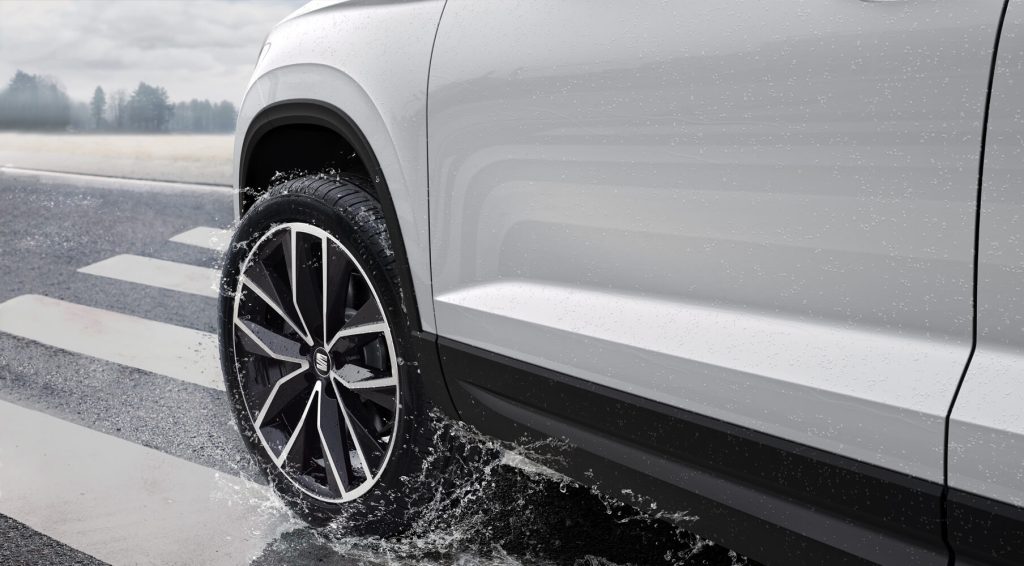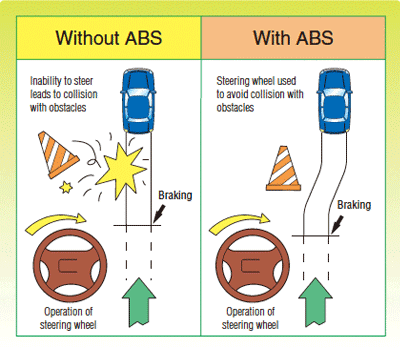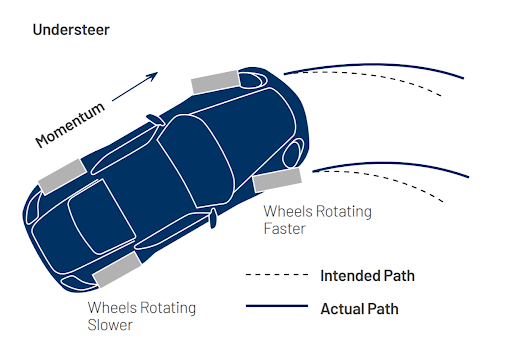Defensive driving techniques for a skidding car
Our country’s road conditions are incomplete, making moving in the rainy season extremely difficult and dangerous. The following article will guide some defensive driving techniques to help regain vehicle stability in 5 common wheel slip phenomena.

Defensive driving techniques for car in skid situations
1. Slide the gear
A wheel slip usually occurs when you try to accelerate or depress the gas to get out of a puddle. The wheels start to slip and spin faster than normal travel speed. This can have a variety of consequences, depending on whether a vehicle drives the front wheel or the rear wheel.
The safest defensive driving technique to drive a car in this situation is to simply slow down until the wheels regain grip. After that, try to move more slowly and more cautiously on muddy roads or potholes. To ensure safety, you should check the grip of the road before each trip by feeling the slip while running on the side of the road.
Although we always try to avoid skidding, it also has benefits in many cases. When traveling on muddy or slippery roads, the wheel slide can help remove the dirt back until the wheel better touch the contact surface.
In many models, built-in traction control prevents this from happening by activating the brakes or automatically reducing the throttle or both. This can cause some problems when you go downhill or drive out of the parking lot if the road is muddy. Turn the system off and fix the problem yourself by pressing and releasing the gas slowly until the wheels regain grip.
2. Don’t forget this defensive driving technique – Lock the gear
Locking occurs when you brake sharply and suddenly. Basically, the wheel will stop spinning but due to the inertia force the car will still slide forward.
When you encounter this wall, just release the brake completely and try to brake more slowly and gently. On slippery roads, locking is very common. When you suddenly brake from 0 to 50%, the wheel will lock automatically, but when braking slowly, you can still pass the threshold of 50% without the wheel locking.
Like skidding, the wheel lock can help you feel the changing environment. Check the smoothness of the pavement from time to time by locking the wheels while traveling in a straight line. At the same time, this phenomenon also has certain benefits in “clearing” the mud on the road ahead so that the car can regain grip. In addition, on gravel, sand, locking the wheel will help the car stop quickly and safely.

Today, many models are equipped with ABS. This system imposes a certain brake threshold on all four wheels to prevent wheel lock. But this also causes some problems that the car cannot slow down quickly and it takes more time and longer distances.
3. Defensive driving techniques – Lack of understeer driver

Understeer occurs when the front wheel loses traction and the vehicle cannot turn the turn according to the driver’s will. Understeer usually occurs when the driver turns at high speed on slippery roads. The smaller the angle and the greater the speed, the more likely you will have to “find a soft place” to crash into. Therefore, please pay close attention when traveling on this kind of road.
If you are cornering at high speed, the most effective driving technique for reducing the effects of underdevelopment is to immediately remove the accelerator pedal and step on the brake slowly. Pay attention, always look in the direction you want to go and stay calm to best adjust the steering wheel.
Skidding in the front wheel can lead to a serious lack of steering, especially, in front-wheel drive vehicles. Therefore, if you are driving in this form, you should never slip, then understeer will almost certainly happen and very difficult to handle. Locking the front wheel during cornering also creates a dangerous lack of steering. Therefore, if you have to step on the brake pedal, always depress the gas pedal and release the brake slightly so that the bike can still run.
When there is a lack of steering, the vehicle’s weight distribution is altered, causing loss of stability. When accelerating to uphill or a vehicle using a soft suspension system, the weight will accumulate behind. To adjust, you need to release the accelerator, or lightly press the brake to make the weight drop a little on the front wheel. This will help the car retain better grip.
4. One of the most important defensive driving techniques – Oversteer driver
Oversteer occurs when the rear wheel loses traction, and the rear of the vehicle slips to one side. This usually occurs on rear-wheel drive (sometimes on four-wheel drive). The solution to handle oversteer is quite simple, just release the accelerator, look in the direction you want to go and gently control the steering wheel in that direction.
Overdrive usually occurs when you move too fast and brake when cornering. The rear wheel starts to slip because the weight is put too much on the front wheel, the pressure on the rear wheel is reduced. This phenomenon usually occurs with vehicles with a lot of weight on the rear wheels such as pickup trucks or models with rear-wheel drive. oversteer also often occurs when the vehicle goes downhill at a curve for the same reason.
To handle the oversteer, you have to look at the road you want to go, brake and accelerate slightly so that a portion of the weight collects in the rear wheel and prevents it from slipping.
5. Swipe back and forth counterskid
Counterskid usually happens after you have overdrive and are not handling it well. The rear of the car will slide back and forth and create impulses. If you do not handle it quickly in the first or second lap, the car will slip on the third lap very violently and is difficult to handle.
When you begin to override, the most important thing is to look at the road you want to go and slowly and carefully adjust the appropriate steering wheel. As soon as the vehicle is on the right track, adjust the wheels straight so that the weight is distributed across the four wheels. Skidding often occurs due to late handling by the driver, over-hitting the steering wheel and repeating these mistakes until the car gets out of the way.
In addition to mastering the technical instructions to drive a car in specific situations, you need to remember that visibility is key to solving any problem. Always focus on observing the road ahead to confidently regain control of the steering wheel. Do not let vehicles back and forth and you will be safe.